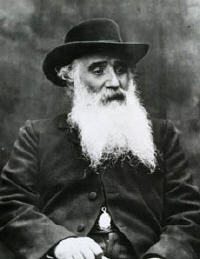
Born July 10, 1830 in St. Thomas, Virgin Islands. Camille Pissarro was sent to Paris to study as a boy, where he earned acclaim for his budding talent as an artist. He was obligated to return to St. Thomas in 1847 to help his father run his general store, but by 1855, he had convinced his parents to allow him to pursue his dream of becoming a painter.
Camille Pissarro returned to Paris, where the landscapes of Camille Corot and other members of the Barbizon group made a huge impression on him at the World’s Fair. The concept of working directly from nature appealed to the young artist, and he gravitated toward landscape painting. Over the next 10 years, he studied at the prestigious École des Beaux-Arts and at the Académie Suisse, where classes were free.
Camille Pissarro’s education was as much about formal studies as it was about meeting like-minded contemporaries with whom Pissarro could share ideas. Among them were Claude Monet, Pierre Auguste Renoir, Alfred Sisley, and Paul Cézanne. The artists were experimenting with new ways of painting that eschewed the traditional methods of the past. Pissarro's works were occasionally accepted at the prestigious state-run art show, the Salon. Perhaps more importantly, he won the critical support of journalist Émile Zola, who helped the artist build his career.
During the Franco-Prussian War, Camille Pissarro left France for London with his friend Claude Monet. There, they were influenced by the landscape paintings of John Constable and J.M.W. Turner in developing a unique style that would later be known as Impressionism. Upon returning to his home near Paris, Pissarro discovered that the Prussians had destroyed nearly all of his paintings.
After several rejections by the Salon, Camille Pissarro and his colleagues decided to hold their own independent exhibition of their Impressionist works. The first of these independent shows was held in 1874 and included Pissarro, Monet, Renoir, Sisley, Edgar Degas, and Berthe Morisot. Pissarro participated in all eight of the independent exhibitions from 1874-86, the only artist to do so.
Camille Pissarro was seen as the patriarch of the Impressionist movement, and was constantly encouraging younger artists and managing the artistic revolution’s progress. In 1892, he finally received the international recognition he deserved with a large-scale retrospective of his work, including Path through the Fields (1879), Landscape, Eragny (1895), and Place du Théâtre Français (1898). He died in Paris on November 12, 1903.